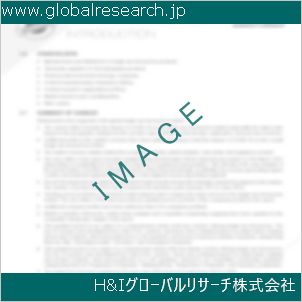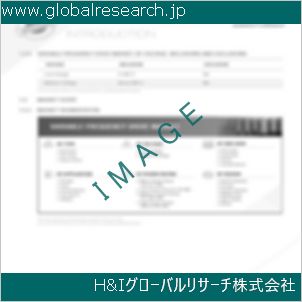Table of Contents
1 Industry Overview of Styreneoxide
1.1 Definition and Specifications of Styreneoxide
1.1.1 Definition of Styreneoxide
1.1.2 Specifications of Styreneoxide
1.2 Classification of Styreneoxide
1.3 Applications of Styreneoxide
1.3.1 Nuclear Application
1.3.2 Non-Nuclear Application
1.4 Industry Chain Structure of Styreneoxide
1.5 Industry Overview and Major Regions Status of Styreneoxide
1.5.1 Industry Overview of Styreneoxide
1.5.2 Global Major Regions Status of Styreneoxide
1.6 Industry Policy Analysis of Styreneoxide
1.7 Industry News Analysis of Styreneoxide
2 Manufacturing Cost Structure Analysis of Styreneoxide
2.1 Raw Material Suppliers and Price Analysis of Styreneoxide
2.2 Equipment Suppliers and Price Analysis of Styreneoxide
2.3 Labor Cost Analysis of Styreneoxide
2.4 Other Costs Analysis of Styreneoxide
2.5 Manufacturing Cost Structure Analysis of Styreneoxide
2.6 Manufacturing Process Analysis of Styreneoxide
3 Technical Data and Manufacturing Plants Analysis of Styreneoxide
3.1 Capacity and Commercial Production Date of Global Styreneoxide Major Manufacturers in 2023
3.2 Manufacturing Plants Distribution of Global Styreneoxide Major Manufacturers in 2023
3.3 R&D Status and Technology Source of Global Styreneoxide Major Manufacturers in 2023
3.4 Raw Materials Sources Analysis of Global Styreneoxide Major Manufacturers in 2023
4 Capacity, Production and Revenue Analysis of Styreneoxide by Regions, Types and Manufacturers
4.1 Global Capacity, Production and Revenue of Styreneoxide by Regions 2019-2024
4.2 Global and Major Regions Capacity, Production, Revenue and Growth Rate of Styreneoxide 2019-2024
4.3 Global Capacity, Production and Revenue of Styreneoxide by Types 2019-2024
4.4 Global Capacity, Production and Revenue of Styreneoxide by Manufacturers 2019-2024
5 Price, Cost, Gross and Gross Margin Analysis of Styreneoxide by Regions, Types and Manufacturers
5.1 Price, Cost, Gross and Gross Margin Analysis of Styreneoxide by Regions 2019-2024
5.2 Price, Cost, Gross and Gross Margin Analysis of Styreneoxide by Types 2019-2024
5.3 Price, Cost, Gross and Gross Margin Analysis of Styreneoxide by Manufacturers 2019-2024
6 Consumption Volume, Consumption Value and Sale Price Analysis of Styreneoxide by Regions, Types and Applications
6.1 Global Consumption Volume and Consumption Value of Styreneoxide by Regions 2019-2024
6.2 Global and Major Regions Consumption Volume, Consumption Value and Growth Rate of Styreneoxide 2019-2024
6.3 Global Consumption Volume and Consumption Value of Styreneoxide by Types 2019-2024
6.4 Global Consumption Volume and Consumption Value of Styreneoxide by Applications 2019-2024
6.5 Sale Price of Styreneoxide by Regions 2019-2024
6.6 Sale Price of Styreneoxide by Types 2019-2024
6.7 Sale Price of Styreneoxide by Applications 2019-2024
6.8 Market Share Analysis of Styreneoxide by Different Sale Price Levels
7 Supply, Import, Export and Consumption Analysis of Styreneoxide
7.1 Supply, Consumption and Gap of Styreneoxide 2019-2024
7.2 Global Capacity, Production, Price, Cost, Revenue, Supply, Import, Export and Consumption of Styreneoxide 2019-2024
7.3 USA Capacity, Production, Price, Cost, Revenue, Supply, Import, Export and Consumption of Styreneoxide 2019-2024
7.4 EU Capacity, Production, Price, Cost, Revenue, Supply, Import, Export and Consumption of Styreneoxide 2019-2024
7.5 China Capacity, Production, Price, Cost, Revenue, Supply, Import, Export and Consumption of Styreneoxide 2019-2024
7.6 Japan Capacity, Production, Price, Cost, Revenue, Supply, Import, Export and Consumption of Styreneoxide 2019-2024
8 Major Manufacturers Analysis of Styreneoxide
8.1 Manufacturer One
8.1.1 Company Profile
8.1.2 Product Picture and Specifications
8.1.2.1 Type I
8.1.2.2 Type II
8.1.2.3 Type III
8.1.3 Capacity, Production, Price, Cost, Gross and Revenue
8.1.4 Contact Information
8.2 Manufacturer Two
8.2.1 Company Profile
8.2.2 Product Picture and Specifications
8.2.2.1 Type I
8.2.2.2 Type II
8.2.2.3 Type III
8.2.3 Capacity, Production, Price, Cost, Gross and Revenue
8.2.4 Contact Information
8.3 Manufacturer Three
8.3.1 Company Profile
8.3.2 Product Picture and Specifications
8.3.2.1 Type I
8.3.2.2 Type II
8.3.2.3 Type III
8.3.3 Capacity, Production, Price, Cost, Gross and Revenue
8.3.4 Contact Information
8.4 Manufacturer Four
8.4.1 Company Profile
8.4.2 Product Picture and Specifications
8.4.2.1 Type I
8.4.2.2 Type II
8.4.2.3 Type III
8.4.3 Capacity, Production, Price, Cost, Gross and Revenue
8.4.4 Contact Information
8.5 Manufacturer Five
8.5.1 Company Profile
8.5.2 Product Picture and Specifications
8.5.2.1 Type I
8.5.2.2 Type II
8.5.2.3 Type III
8.5.3 Capacity, Production, Price, Cost, Gross and Revenue
8.5.4 Contact Information
…
9 Marketing Trader or Distributor Analysis of Styreneoxide
9.1 Marketing Channels Status of Styreneoxide
9.2 Traders or Distributors with Contact Information of Styreneoxide by Regions
9.3 Ex-work Price, Channel Price and End Buyer Price Analysis of Styreneoxide
9.4 Regional Import, Export and Trade Analysis of Styreneoxide
10 Industry Chain Analysis of Styreneoxide
10.1 Upstream Major Raw Materials Suppliers Analysis of Styreneoxide
10.1.1 Major Raw Materials Suppliers with Contact Information Analysis of Styreneoxide
10.1.2 Major Raw Materials Suppliers with Supply Volume Analysis of Styreneoxide by Regions
10.2 Upstream Major Equipment Suppliers Analysis of Styreneoxide
10.2.1 Major Equipment Suppliers with Contact Information Analysis of Styreneoxide
10.2.2 Major Equipment Suppliers with Product Pictures Analysis of Styreneoxide by Regions
10.3 Downstream Major Consumers Analysis of Styreneoxide
10.3.1 Major Consumers with Contact Information Analysis of Styreneoxide
10.3.2 Major Consumers with Consumption Volume Analysis of Styreneoxide by Regions
10.4 Supply Chain Relationship Analysis of Styreneoxide
11 Development Trend of Analysis of Styreneoxide
11.1 Capacity, Production and Revenue Forecast of Styreneoxide by Regions and Types
11.1.1 Global Capacity, Production and Revenue of Styreneoxide by Regions 2024-2029
11.1.2 Global and Major Regions Capacity, Production, Revenue and Growth Rate of Styreneoxide 2024-2029
11.1.3 Global Capacity, Production and Revenue of Styreneoxide by Types 2024-2029
11.2 Consumption Volume and Consumption Value Forecast of Styreneoxide by Regions, Types and Applications
11.2.1 Global Consumption Volume and Consumption Value of Styreneoxide by Regions 2024-2029
11.2.2 Global and Major Regions Consumption Volume, Consumption Value and Growth Rate of Styreneoxide 2024-2029
11.2.3 Global Consumption Volume and Consumption Value of Styreneoxide by Types 2024-2029
11.2.4 Global Consumption Volume and Consumption Value of Styreneoxide by Applications 2024-2029
11.3 Supply, Import, Export and Consumption Forecast of Styreneoxide
11.3.1 Supply, Consumption and Gap of Styreneoxide 2024-2029
11.3.2 Global Capacity, Production, Price, Cost, Revenue, Supply, Import, Export and Consumption of Styreneoxide 2024-2029
11.3.3 USA Capacity, Production, Price, Cost, Revenue, Supply, Import, Export and Consumption of Styreneoxide 2024-2029
11.3.4 EU Capacity, Production, Price, Cost, Revenue, Supply, Import, Export and Consumption of Styreneoxide 2024-2029
11.3.5 China Capacity, Production, Price, Cost, Revenue, Supply, Import, Export and Consumption of Styreneoxide 2024-2029
11.3.6 Japan Capacity, Production, Price, Cost, Revenue, Supply, Import, Export and Consumption of Styreneoxide 2024-2029
12 New Project Investment Feasibility Analysis of Styreneoxide
12.1 New Project SWOT Analysis of Styreneoxide
12.2 New Project Investment Feasibility Analysis of Styreneoxide
13 Conclusion of the Global Styreneoxide (CAS 96-09-3) Industry 2024 Market Research Report
| ※参考情報 酸化スチレン(Styrene oxide)は、化学式 C8H8O を持つ有機化合物であり、主に化学工業で重要な中間体として利用されています。CAS番号は 96-09-3 で、特にポリスチレンや他のスチレン系ポリマーの製造に際して必要とされる物質です。以下では、酸化スチレンの定義や特徴、種類、用途、そして関連技術について詳しく説明いたします。 酸化スチレンは、スチレン分子にエポキシ基(エポキシ化合物)が導入された形で存在します。エポキシ化とは、二重結合を持つ炭素原子に酸素原子を挿入して環状エーテルを生成する反応であり、これによって分子の反応性が高まる特徴があります。酸化スチレンは無色透明の液体であり、甘い香りを持ちますが、揮発性が高いため、取り扱いには注意が必要です。 この化合物の性質としては、極性が高く、他の有機溶媒と相溶性が良いため、多くの化学反応に適応可能です。特に、酸化スチレンは親水性の特性を有し、これが水分との相互作用を促進します。さらに、酸化スチレンは、他の化合物と反応しやすいため、合成化学において非常に重要な役割を果たしています。 酸化スチレンは、その構造から主に二種類の異性体が存在します。一つは、1,2-エポキシスチレン、もう一つは、2,3-エポキシスチレンです。これらの異性体は、反応性や生物学的な特性が異なるため、用途に応じて使い分けられることがあります。 酸化スチレンの用途には、様々な産業での重要な役割が含まれます。最も一般的な用途としては、ポリマーの製造が挙げられます。特にポリスチレンやその誘導体、エポキシ樹脂の製造に利用されます。これらのポリマーは、包装材、建築材料、電子機器、自動車部品に至るまで、幅広く用いられています。さらに、酸化スチレンは、医薬品や農薬の合成においても重要な中間体として使用されます。そのため、化学合成や製薬産業における需要が高まっています。 また、酸化スチレンは、接着剤やコーティング剤の製造にも利用されます。エポキシ樹脂と組み合わせることで、機械的強度や耐久性を向上させることができるため、これらの製品は高い市場価値を持っています。 さらに、医療分野においても酸化スチレンは重要な役割を果たしています。特に、生体適合性の高いエポキシ樹脂は、医療機器やインプラントの製造に使用されることがあります。また、酸化スチレンは抗がん剤の合成にも寄与しており、新しい治療法の開発に向けた研究が進められています。 酸化スチレンの製造には、いくつかの化学プロセスが存在します。一般的には、スチレンを酸化することによって生成されます。この酸化反応には、過酸化物や酸化剤が使用される場合が多く、反応条件の最適化が重要です。通常は、適切な温度と圧力が必要であり、反応触媒の選定も重要な要素です。 このように、酸化スチレンはその高い反応性と多様な用途によって、産業界での需要が非常に高い化合物です。新しい材料の開発や環境に優しい製品の製造が求められるなか、酸化スチレンを使った技術革新は今後も続くと考えられます。これにより、持続可能な化学産業の構築に寄与することが期待されています。 最後に、酸化スチレンには取り扱いに際しての安全管理が求められます。そのため、労働安全衛生や環境規制に関連した法令の遵守が必要です。取り扱う際には適切な個人防護具を使用し、直接接触を避けることが重要です。酸化スチレンの特性や反応性を理解することで、安全かつ効果的な利用が可能となるでしょう。 このように、酸化スチレンは多岐に渡る利用がされる重要な化合物であり、その特性を活かすことで様々な産業に貢献しています。今後も研究が進み、さらなる応用が期待される分野となっています。 |
❖ 免責事項 ❖
http://www.globalresearch.jp/disclaimer












